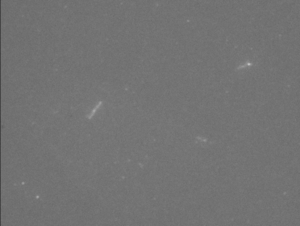User:Andy Maloney/Notebook/Lab Notebook of Andy Maloney/2009/09/08/Surface passivation studies
Note
Brian and I made more microtubules and we got a new aliquot of kinesin.
To do
There are still several things that I want to try before I call this quits. Well, maybe not quits but definitely I am finding that kinesin motility assays may require casein for them to work. In the very least, this is something very good to know. If it really is the case, then there is something special about casein that allows the kinesin to stay active. What that is, structural or chemical, still needs to be determined. What's nice is that once we do know what it is, perhaps there is a way to artificially produce the thing that kinesin likes to sit on.
- Hydrophobic surface.
- Hydrophobic surface with a groove.
- Corn starch.
- Potato starch.
- Gluten/flour.
- Silica nanoparticles.
- Silanized surface. I'm not sure how to do this one but apparently lots of people do it to attache DNA to a coverslip.
- Lipids with PEG on a hydrophobic surface spin coated.
- Better spin coating of lipids on coverslips.
- PE lipids?
- Gelatin?
Hydrophobic surface
I tried the hydrophobic coverslips I purchased from EMS. In all honesty, I have no clue as to what these things are. They definitely are not glass since I cannot break them like glass. They must be some sort of plastic but what that plastic is, I do not know. I'm guessing they are similar to the pipet tips we get from Eppendorf but of course these things are trade secrets and as such, no one knows what they are. At any rate, I tried a sample and as you can see below, it didn't work.
I guess the question now is, what does this mean? Glass will not support an active kinesin experiment and the thought behind this is that once kinesin comes in contact with the glass, it denatures and becomes inactive. You can however coat a glass coverslip with enough kinesin such that it creates a layer of denatured kinesin on it. Thus, you can support a viable kinesin assay by adding more kinesin on top of the denatured kinesin. This leads to the belief that kinesin needs some sort of structural support in order to be viable.
The belief that kinesin needs some sort of support structure lead me to thinking that kinesin needs a hydrophobic structure to attach itself to and not an actual support. This is why I tried the hydrophobic surface. Unfortunately, it didn't work which leads me to say that kinesin needs to be held up structurally.
Hydrophobic surface with a groove
So, in the light that I think kinesin needs some sort of support structure, I cut a groove in the hydrophobic slide with a razor. Initially I thought that the slides I have were made of glass and that there was a layer of some sort of hydrophobic stuff on it. This is wrong. So when I did the experiment, there should have been no surprise that it didn't work.
In the above picture, you can see a change in the gray levels that indicate where the grove is. You can also see a microtubule in the picture. I didn't take any movies of this because there was no activity in any of the slides.
Questions
Of course this leads to several questions and possible ideas behind how kinesin stays active on a casein coated coverslip.
- What does the truncated stalk look like? Will it have some sort of affinity to polar or nonpolar surfaces?
- Did any kinesin stick? I could try coating the hydrophobic slips with enough kinesin such that the experiment is similar to the glass denatured coated slips.
- How big are casein micelles? How long are kinesin molecules? Will the kinesin stick to the casein or is it that the kinesin is held up by the casein?
Corn & potato starch
After ensuring that everything works with the casein substrate, we tried a motility assay substituting corn starch and potato starch instead of casein.
Unfortunately I was not careful enough and we put microtubules with casein in solution in our starch assays. We didn't see any motility so I'm not too sure it will work even if there was no casein in solution. It is worth another try however, to do it right.
Nanoparticles
I tried 15 nm silica nanoparticles as well. I spin coated them at 3 krpm for 30 seconds and then put them on the hot plate for a few minutes. I then added kinesin and MTs.
The funky lines are weird and I will have to think about what they are. As you can see, no motility. This brings up a whole slew of more questions.
Questions/Ideas
- Still, I do not know if both surfaces need to be coated in the flow cell. I need to figure this one out because it could be that everything is working except that the kinesin is so attracted to the glass that all of it makes it to the uncoated side and denatures.
- Could kinesin only be active in passivated protein covered slips? If so, then maybe I should try gluten or gelatin next.
- Hmm, what about agarose?
- So it seems that there is both a chemical and structural component to keeping kinesin active. Unless of course I need to have both surfaces coated.
- Could it be that kinesin is only attracted to certain proteins only found on certain vacuoles, thus making it a target specific motor? And, it just so happens that casein has those magic things on them that kinesin will stick to.


